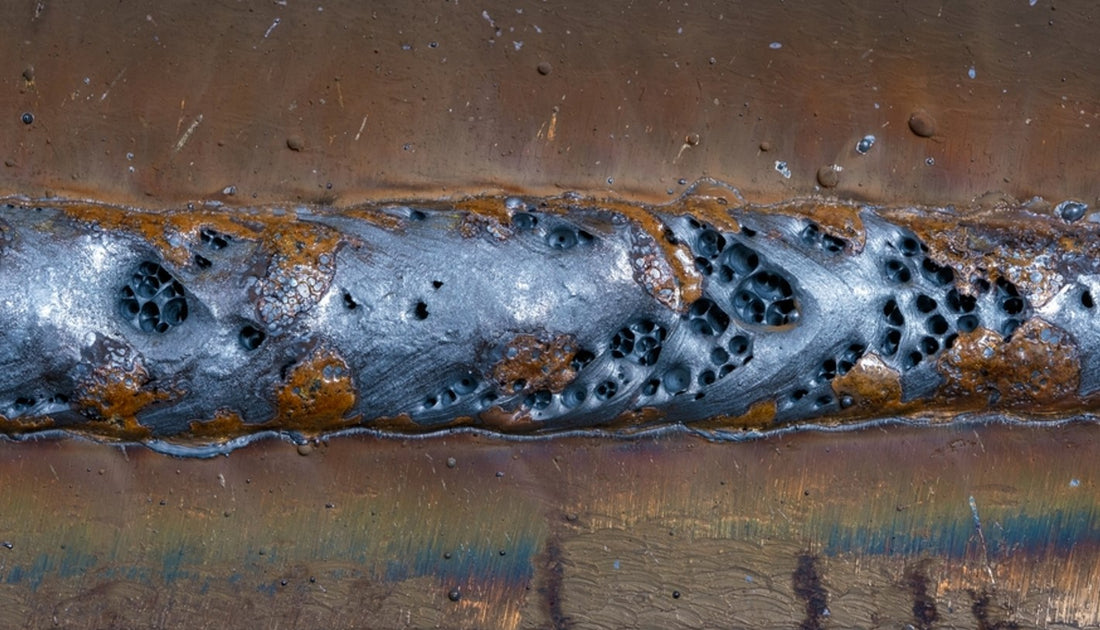Comprehensive Guide: What is Porosity in Welding and How to Prevent It
Comprehensive Guide: What is Porosity in Welding and How to Prevent It
Blog Article
Comprehending Porosity in Welding: Discovering Causes, Effects, and Avoidance Strategies
Porosity in welding is a persistent challenge that can dramatically influence the high quality and stability of welds. As specialists in the welding industry are well conscious, comprehending the causes, effects, and avoidance methods connected to porosity is crucial for accomplishing robust and dependable welds. By delving into the origin of porosity, examining its damaging results on weld top quality, and exploring efficient avoidance strategies, welders can enhance their expertise and abilities to create top notch welds constantly. The detailed interplay of aspects adding to porosity requires a thorough understanding and a positive approach to make sure effective welding end results.
Typical Sources Of Porosity
Porosity in welding is mostly brought on by a mix of factors such as contamination, improper protecting, and inadequate gas protection throughout the welding procedure. Contamination, in the kind of dust, grease, or rust on the welding surface, develops gas pockets when heated, resulting in porosity in the weld. Incorrect securing happens when the shielding gas, typically used in procedures like MIG and TIG welding, is not able to totally secure the molten weld pool from responding with the bordering air, causing gas entrapment and subsequent porosity. Additionally, poor gas protection, typically due to wrong circulation rates or nozzle positioning, can leave components of the weld unguarded, allowing porosity to create. These variables collectively add to the development of voids within the weld, damaging its stability and possibly triggering architectural problems. Recognizing and dealing with these common reasons are important steps in stopping porosity and ensuring the quality and stamina of welded joints.
Impacts on Weld Quality
The existence of porosity in a weld can substantially compromise the general top quality and honesty of the bonded joint. Porosity within a weld develops spaces or tooth cavities that compromise the framework, making it a lot more vulnerable to fracturing, rust, and mechanical failing.
In addition, porosity can prevent the efficiency of non-destructive testing (NDT) techniques, making it testing to detect other flaws or suspensions within the weld. This can lead to substantial safety and security issues, especially in essential applications where the architectural stability of the welded parts is paramount.

Prevention Techniques Overview
Given the harmful influence of porosity on weld high quality, effective avoidance strategies are crucial to preserving the structural stability of welded joints. Additionally, choosing the appropriate welding specifications, such as voltage, existing, and travel rate, can aid lessen the danger of porosity development. By integrating these avoidance techniques right into welding techniques, the occurrence of porosity can be considerably minimized, leading to more powerful and more trusted bonded joints.
Value of Proper Shielding
Correct protecting in welding plays an essential function in protecting against atmospheric contamination and making sure the honesty of bonded joints. look here Securing gases, such as argon, helium, or a mix of both, are frequently used to protect the weld swimming pool from reacting with aspects airborne like oxygen and nitrogen. When these reactive aspects come into contact with the hot weld pool, they can cause porosity, resulting in weak welds with minimized mechanical residential or commercial properties.

Poor shielding Our site can result in numerous problems like porosity, spatter, and oxidation, compromising the structural honesty of the bonded joint. Adhering to appropriate shielding methods is necessary to generate high-grade welds with very little issues and make sure the durability and reliability of the welded parts.
Surveillance and Control Methods
How can welders effectively monitor and regulate the welding process to make certain ideal results and stop defects like porosity? By constantly monitoring these variables, welders can determine discrepancies from the excellent conditions and make prompt modifications to stop porosity formation.

Furthermore, implementing appropriate training programs for welders is essential for keeping an eye on and controlling the welding procedure successfully. What is Porosity. Enlightening welders on the significance of keeping regular parameters, such as appropriate gas securing and take a trip rate, can assist stop porosity problems. Regular analyses and accreditations can likewise ensure that welders excel in surveillance and managing welding procedures
Moreover, making use of automated welding systems can enhance surveillance and control capacities. These systems can precisely manage welding specifications, minimizing the chance of human error and making sure consistent weld top quality. By combining innovative monitoring innovations, training programs, and automated systems, welders can properly keep an eye on and regulate the welding procedure to minimize porosity problems and achieve top notch welds.
Verdict

Report this page